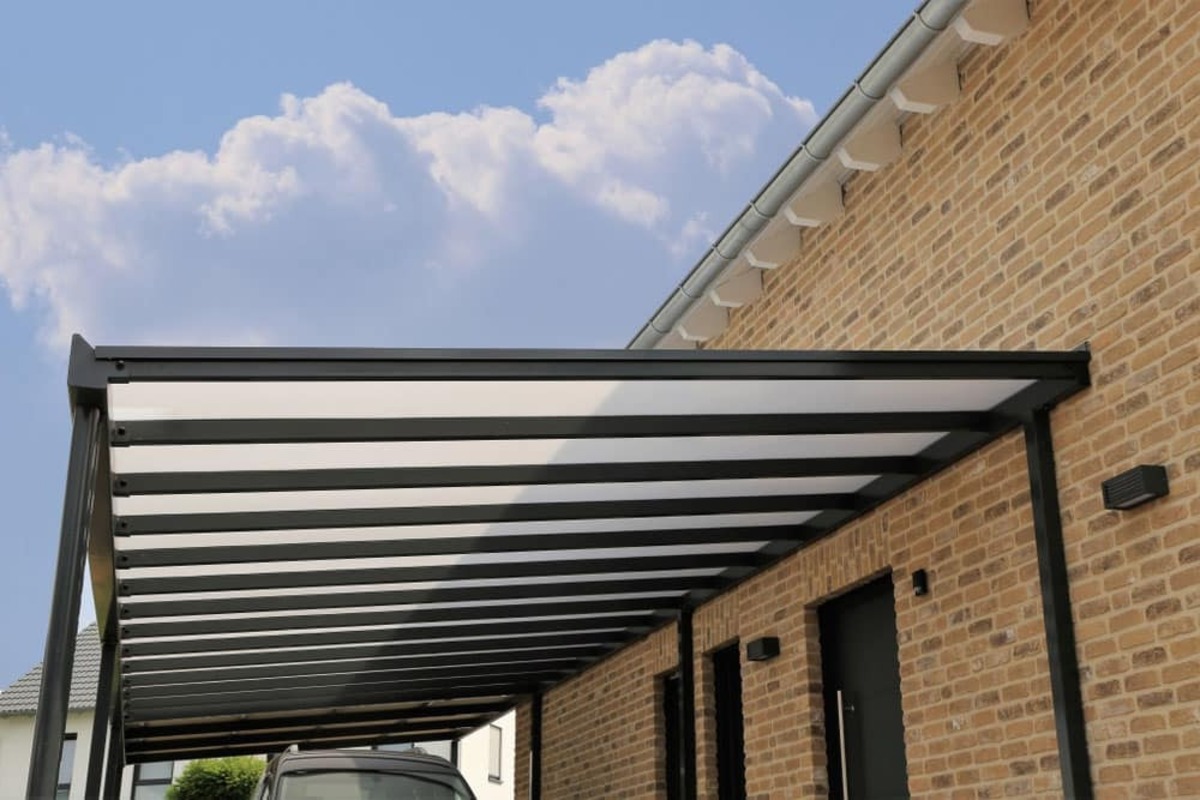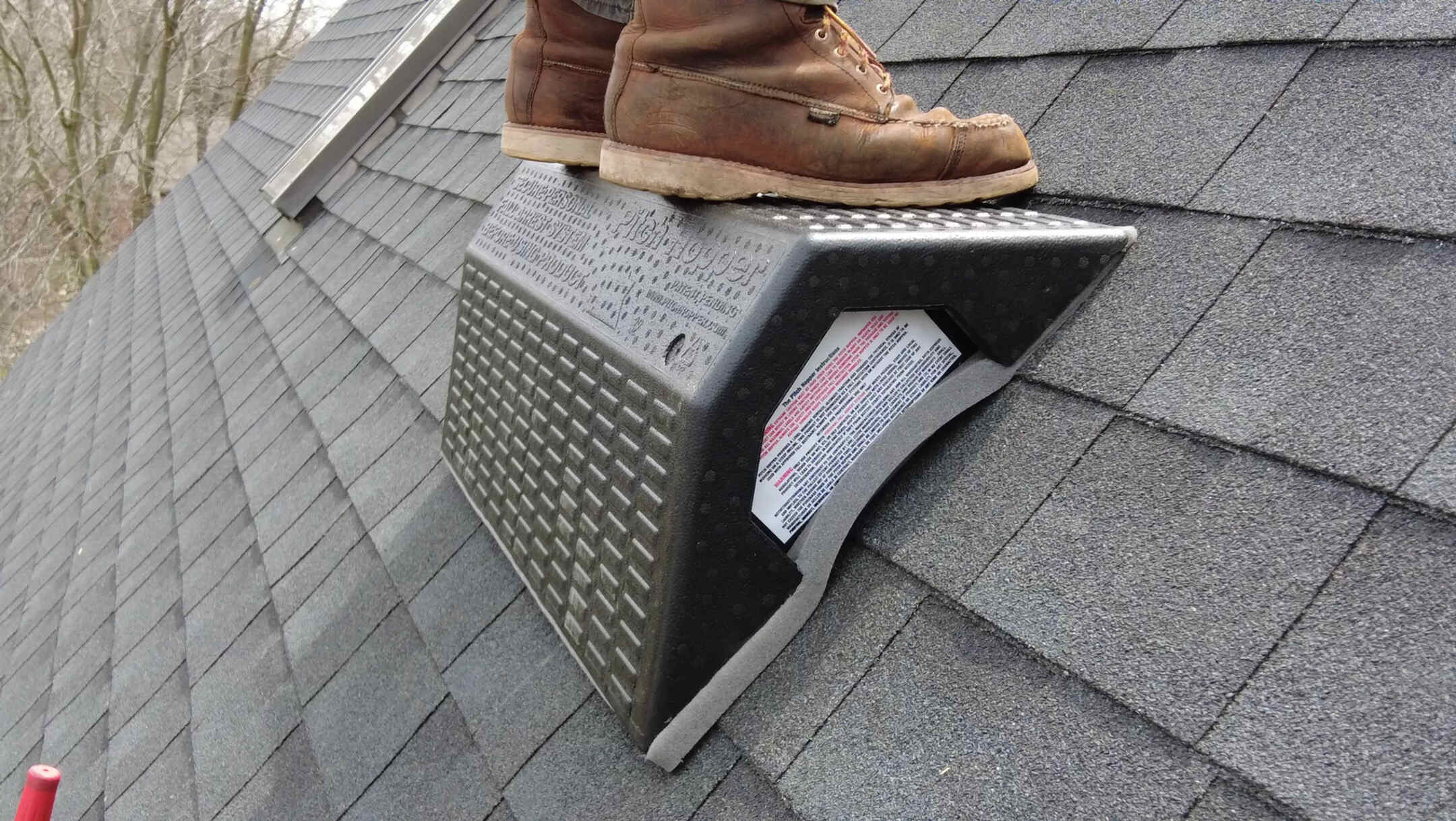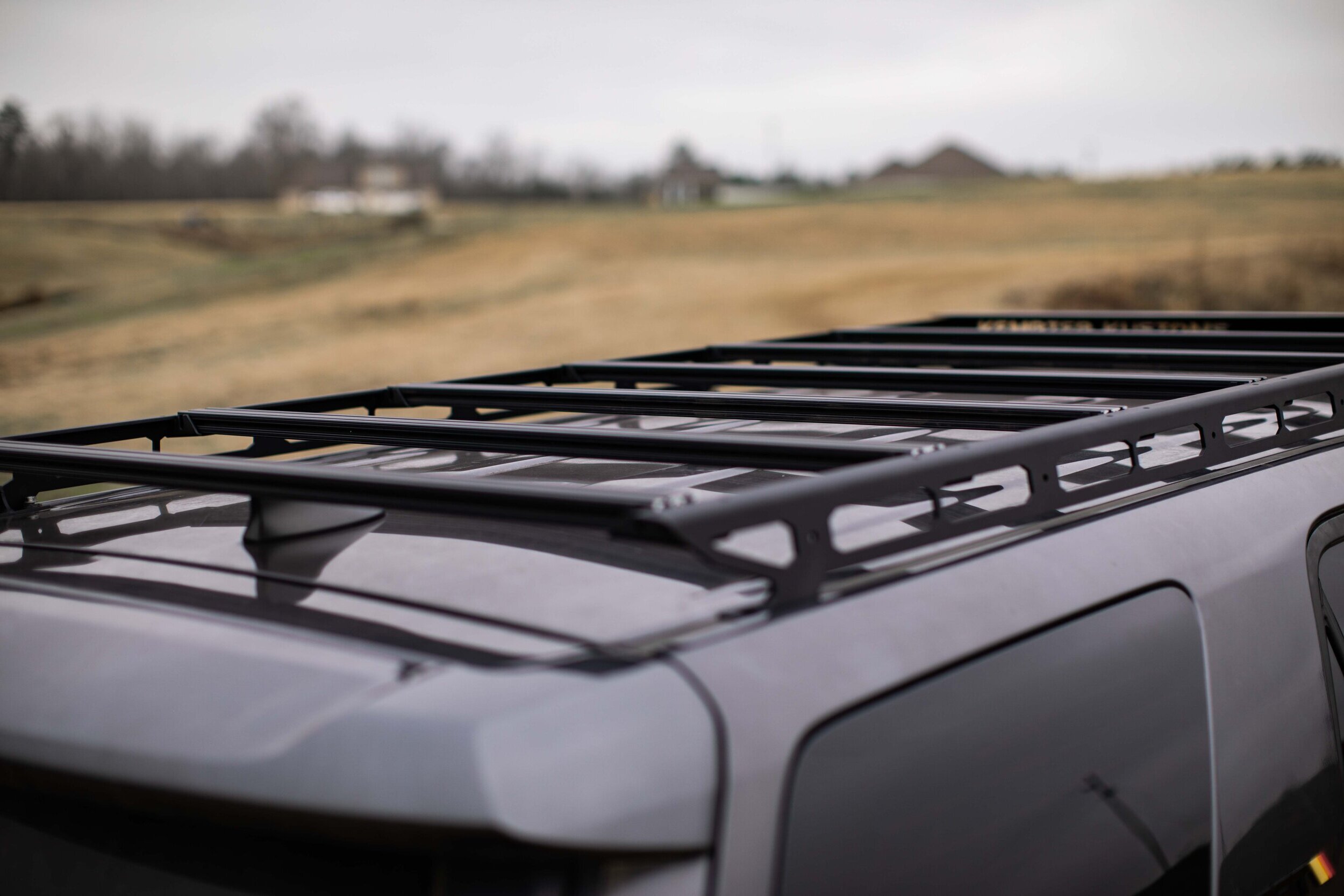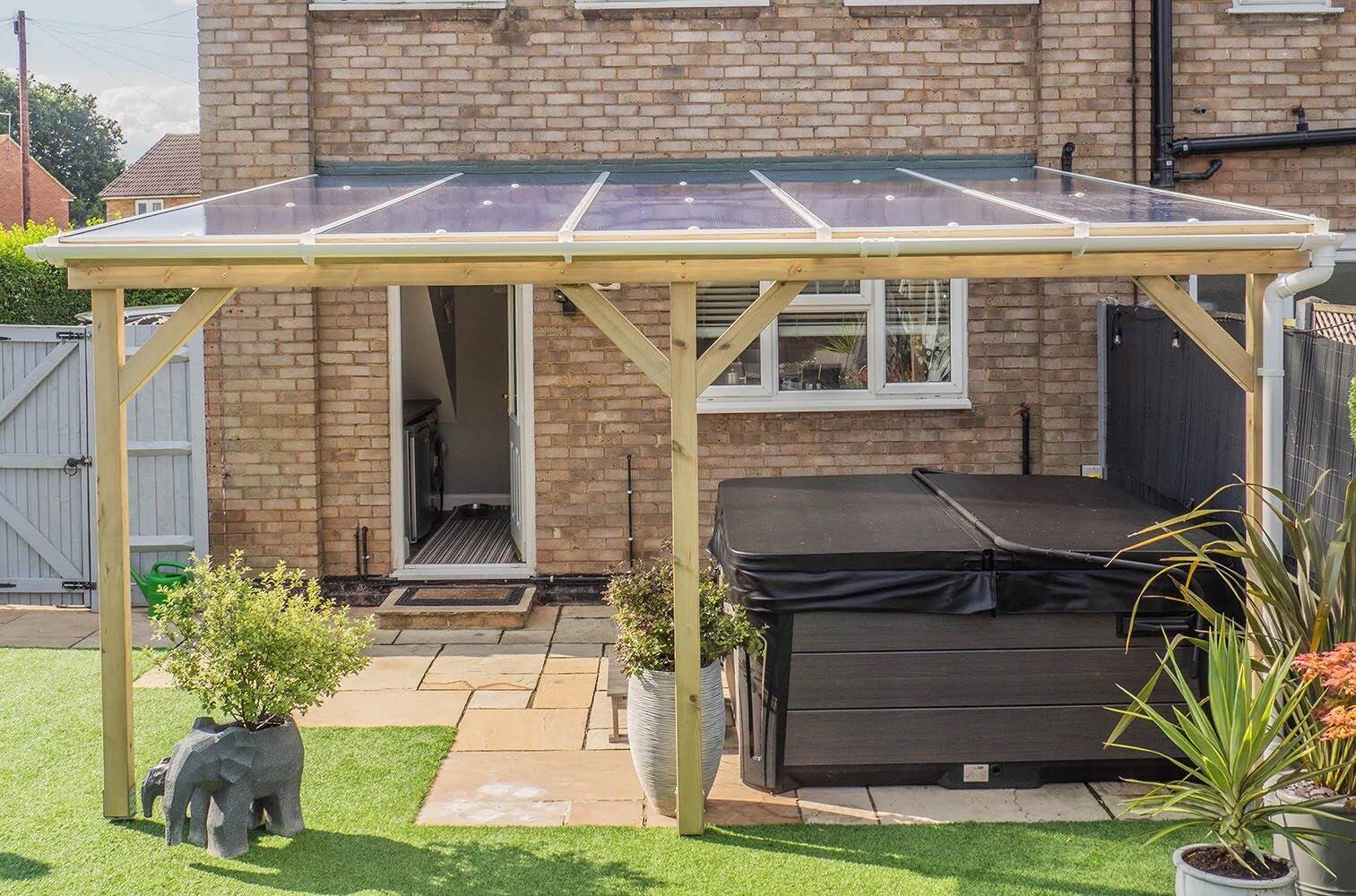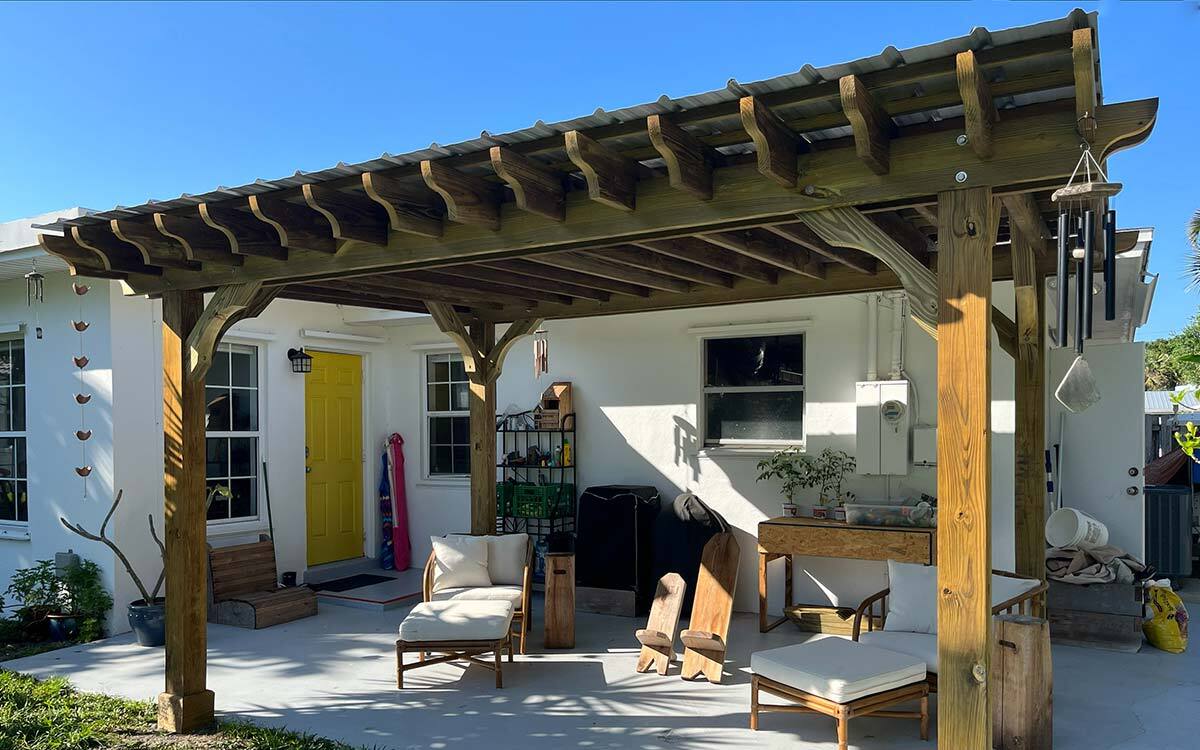Home>Home & Furniture>Roof>How To Build Gable Roof
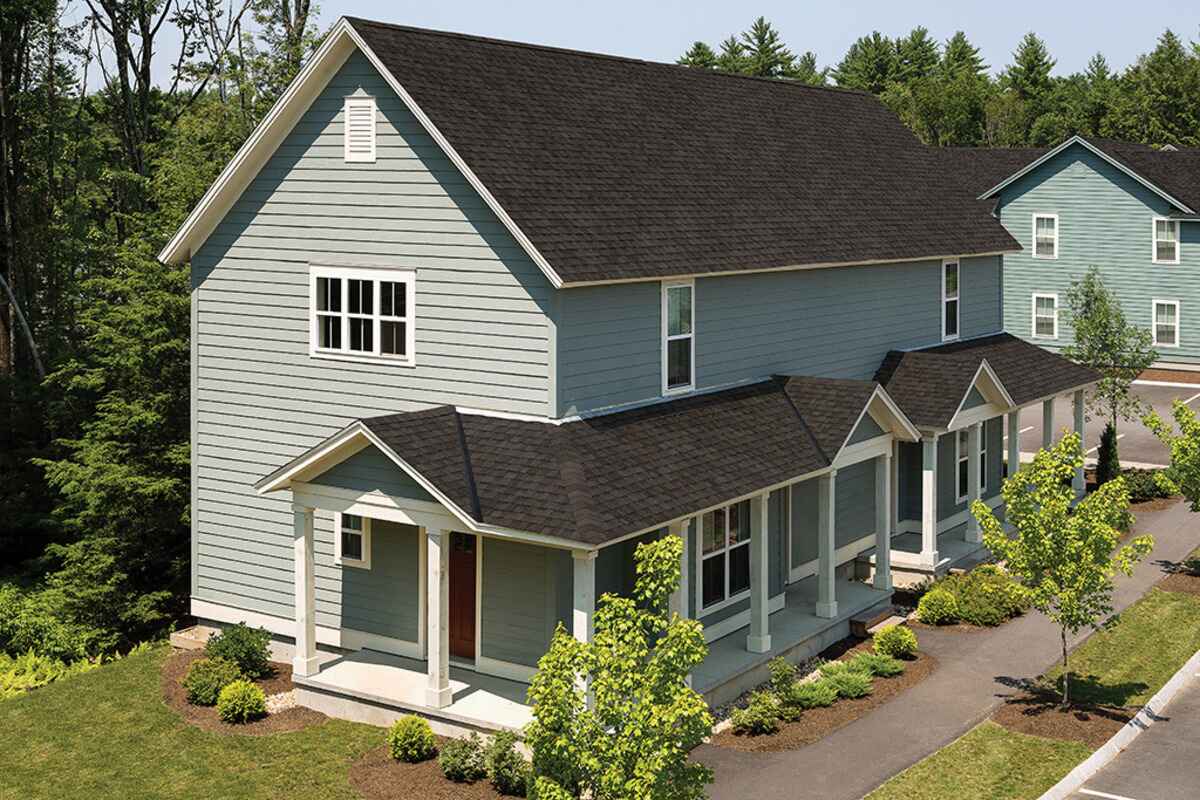

Roof
How To Build Gable Roof
Published: March 6, 2024
Editor-in-Chief with a decade in home renovation and a passion for vintage furniture. Diane is known for her weekend treasure hunts at flea markets, enriching our content with unique style insights.
Learn how to build a gable roof with our comprehensive guide. Find expert tips and step-by-step instructions for constructing a sturdy and stylish roof.
(Many of the links in this article redirect to a specific reviewed product. Your purchase of these products through affiliate links helps to generate commission for Twigandthistle.com, at no extra cost. Learn more)
Introduction
So, you've decided to take on the challenge of building a gable roof. Congratulations! Gable roofs are a classic and popular choice for many homeowners due to their simple design and excellent drainage capabilities. In this article, we will guide you through the process of building your very own gable roof, from understanding the basics to the final touches. Whether you're looking to add a new structure to your property or replace an existing roof, this comprehensive guide will equip you with the knowledge and confidence to tackle this DIY project head-on. Let's get started!
Understanding Gable Roofs
A gable roof is one of the most recognizable and classic roof designs, characterized by its triangular shape. It consists of two sloping sides that meet at the top to form a ridge, with the end walls extending from the eaves to the peak. This design allows for efficient water runoff and provides excellent ventilation and attic space. Gable roofs are versatile and can be adapted to various architectural styles, making them a popular choice for residential and commercial buildings alike. They are also relatively simple to construct, making them an attractive option for DIY enthusiasts.
Advantages of Gable Roofs
- Excellent Drainage: The steep pitch of gable roofs allows rain, snow, and debris to easily slide off, preventing water buildup and potential leaks.
- Ventilation: The triangular shape of gable roofs creates ample space for hot air to escape, promoting better airflow and reducing the risk of moisture-related issues.
- Aesthetic Appeal: Gable roofs offer a timeless and classic look that complements a wide range of architectural styles, from traditional to modern.
- Adaptability: Whether you're building a small shed or a large house, gable roofs can be customized to suit different sizes and shapes of structures.
Types of Gable Roofs
- Side Gable: This is the most common type of gable roof, where the gable ends are located on the sides of the building.
- Cross Gable: In this design, two or more gable roof sections intersect at right angles, creating additional architectural interest.
- Front Gable: The gable end faces the front of the building, often seen in colonial and Cape Cod-style homes.
- Dutch Gable: Also known as a gablet roof, this is a combination of a hip roof and a gable roof, featuring a small gable at the top of a hip roof.
Understanding the fundamentals of gable roofs is essential before embarking on the construction process. With this knowledge in hand, you'll be better equipped to plan and execute your gable roof project with confidence.
Planning and Designing Your Gable Roof
When it comes to building a gable roof, thorough planning and thoughtful design are crucial for a successful outcome. Here are the key steps to consider as you embark on the planning and design phase:
-
Assess Your Needs: Begin by assessing your specific needs and the purpose of the gable roof. Are you building a new structure, such as a garage or a backyard shed, or are you replacing an existing roof? Understanding the intended function of the gable roof will help you determine the appropriate size, pitch, and materials needed for the project.
-
Determine Roof Pitch: The pitch, or slope, of a gable roof plays a significant role in its functionality and aesthetic appeal. Consider factors such as local climate, architectural style, and drainage requirements when determining the ideal pitch for your gable roof. A steeper pitch allows for efficient water runoff and provides more space for an attic or storage, while a shallower pitch may be suitable for regions with milder weather conditions.
-
Obtain Necessary Permits: Before diving into the construction phase, it's essential to check local building codes and obtain any required permits for the gable roof project. Building regulations and permit requirements vary by location, so be sure to consult with your local building authority to ensure compliance with relevant codes and regulations.
-
Create Detailed Plans: Develop detailed plans and drawings for your gable roof, including precise measurements, material specifications, and structural details. If you're working with an architect or designer, communicate your vision and requirements clearly to ensure that the plans align with your expectations.
-
Consider Ventilation and Insulation: Proper ventilation and insulation are essential aspects of gable roof design. Plan for adequate ventilation to prevent moisture buildup and ensure proper airflow within the attic space. Additionally, consider the type of insulation that will be used to maintain energy efficiency and indoor comfort.
-
Choose Roofing Materials: Selecting the right roofing materials is a critical part of the planning process. Consider factors such as durability, aesthetics, and maintenance requirements when choosing shingles, metal panels, or other roofing options for your gable roof. Take into account the overall design of your property and the desired longevity of the roof when making this decision.
By carefully planning and designing your gable roof, you can set the stage for a smooth and successful construction process. Taking the time to consider these key elements will help you create a gable roof that not only meets your functional needs but also enhances the overall appeal of your property.
Read more: How To Build An A Frame Roof
Choosing Materials for Your Gable Roof
Selecting the right materials for your gable roof is a crucial decision that will impact the durability, aesthetics, and maintenance requirements of your project. Here are the key considerations to keep in mind when choosing materials for your gable roof:
Roofing Shingles
When it comes to traditional gable roofs, asphalt shingles are a popular choice due to their affordability, ease of installation, and variety of color options. They provide reliable protection against the elements and can complement a wide range of architectural styles. If you're looking for a more upscale and long-lasting option, consider architectural or dimensional shingles, which offer enhanced durability and a more textured appearance.
Metal Roofing
Metal roofing has gained popularity for gable roofs due to its exceptional longevity, low maintenance, and energy efficiency. Options such as standing seam metal panels or metal shingles provide a sleek and modern look while offering superior resistance to weathering, fire, and pests. Additionally, metal roofing is lightweight and can be installed over existing shingles in many cases, reducing the need for a complete tear-off.
Wood Shakes or Shingles
For a rustic and natural aesthetic, wood shakes or shingles can add charm and character to a gable roof. Cedar and redwood are popular choices for their natural resistance to decay and insects. Keep in mind that wood roofing requires regular maintenance to prevent moss and algae growth, and it may have specific fire resistance requirements in certain regions.
Read more: How to Build a DIY Camper Roof
Synthetic Roofing Materials
Synthetic roofing materials, such as composite shingles or polymer-based products, offer a blend of durability, aesthetics, and low maintenance. These materials can mimic the look of natural slate, wood, or clay tiles while providing enhanced resistance to impact, UV exposure, and moisture. They are often lightweight and easy to install, making them a practical choice for gable roofs of various sizes.
Considerations for Underlayment and Flashing
In addition to the primary roofing materials, it's essential to consider the underlayment and flashing components that will contribute to the overall performance of your gable roof. Quality underlayment, such as synthetic or felt-based products, provides an additional layer of protection against water infiltration and helps to prevent leaks. Properly installed flashing around roof penetrations, valleys, and edges is crucial for directing water away from vulnerable areas and ensuring long-term weather resistance.
Sustainability and Energy Efficiency
If sustainability and energy efficiency are priorities for your gable roof, explore options such as cool roofing materials, which are designed to reflect more sunlight and absorb less heat. Additionally, consider the potential for incorporating solar panels or green roofing elements into your gable roof design to maximize energy savings and environmental benefits.
By carefully evaluating the characteristics and benefits of different roofing materials, you can make an informed decision that aligns with your aesthetic preferences, budget, and long-term maintenance goals. Whether you prioritize traditional charm, modern durability, or eco-friendly features, there are diverse options available to suit your gable roof project.
Building the Frame for Your Gable Roof
Building the frame for your gable roof is a critical phase that sets the foundation for the entire roofing structure. Whether you are constructing a new building or replacing an existing roof, the frame must be carefully designed and built to ensure structural integrity and long-term stability. Here's a detailed overview of the essential steps involved in building the frame for your gable roof:
Read more: How to Build a Green Roof Guide
Assessing Structural Requirements
Before diving into the construction process, it's crucial to assess the structural requirements of your gable roof frame. Factors such as the size of the building, local building codes, wind and snow loads, and the span of the roof will influence the design and materials used for the frame. If you're unsure about the specific structural considerations, consulting with a structural engineer or experienced builder can provide valuable insights.
Selecting Framing Materials
The choice of framing materials plays a significant role in the strength and durability of your gable roof. Common options for roof framing include traditional lumber, engineered wood products (such as LVL or laminated veneer lumber), and steel. Each material has its unique characteristics and load-bearing capabilities, so it's essential to select the most suitable option based on your project's requirements and budget.
Designing the Roof Trusses or Rafters
Roof trusses or rafters form the primary framework of a gable roof, supporting the roof's weight and transferring it to the building's walls. When designing the trusses or rafters, factors such as the roof pitch, span, and desired ceiling height should be taken into account. Trusses are pre-fabricated structural components that offer efficient load distribution and can be customized to accommodate various roof designs. On the other hand, traditional rafters provide a more classic look and allow for flexible interior space, but they require precise assembly and installation.
Installing Ridge Beams and Support Columns
The ridge beam, which runs along the peak of the gable roof, plays a crucial role in distributing the roof load and maintaining structural stability. Depending on the size and design of the roof, ridge beams may be constructed using large dimensional lumber, engineered wood products, or steel beams. Additionally, support columns or posts may be required to provide vertical support for the ridge beam and distribute the roof load to the building's foundation. Proper placement and anchoring of these components are essential for the overall strength of the gable roof frame.
Read more: How to Build a DIY Roof Riser
Ensuring Proper Bracing and Sheathing
Bracing the roof frame during construction is essential to prevent lateral movement and maintain its shape and alignment. Diagonal bracing, often installed between trusses or rafters, helps to resist wind forces and maintain the structural integrity of the roof. Additionally, roof sheathing, typically made of plywood or oriented strand board (OSB), is installed over the trusses or rafters to provide a solid base for the roofing materials and contribute to the overall rigidity of the roof frame.
Securing Connections and Fastenings
Properly securing the connections and fastenings within the roof frame is crucial for ensuring its stability and resistance to external forces. Whether using nails, screws, or metal connectors, each connection point must be carefully installed according to the manufacturer's specifications and local building codes. Attention to detail in this phase can significantly impact the long-term performance and safety of the gable roof.
By meticulously addressing each of these steps in the frame-building process, you can lay a solid foundation for a structurally sound and reliable gable roof. Whether you choose to tackle this phase as a DIY enthusiast or enlist the expertise of professional contractors, prioritizing precision and adherence to best practices will contribute to the success of your gable roof project.
Installing Roof Sheathing and Underlayment
Once the frame of your gable roof is in place, the next crucial step is to install the roof sheathing and underlayment. This phase is essential for providing a solid base for the final roofing materials and ensuring proper weather resistance. Here's a detailed overview of the process involved in installing roof sheathing and underlayment for your gable roof:
Roof Sheathing Installation
-
Selecting the Sheathing Material: Choose the appropriate sheathing material based on your project's requirements and local building codes. Common options include plywood and oriented strand board (OSB). Consider factors such as structural strength, moisture resistance, and compatibility with the chosen roofing materials.
-
Measuring and Cutting: Accurately measure the dimensions of the roof surface and cut the sheathing panels to fit. Ensure that the panels are properly aligned and staggered to provide uniform support across the entire roof area.
-
Securing the Sheathing: Use nails or screws to secure the sheathing panels to the roof frame, following the manufacturer's recommendations for fastener spacing and penetration depth. Pay attention to the perimeter and edge nailing to maintain the structural integrity of the roof.
-
Addressing Openings and Penetrations: Cut and fit the sheathing around roof openings, such as vents, chimneys, and skylights, ensuring a snug and secure fit. Properly flashing and sealing these areas is crucial for preventing water infiltration.
Read more: How To Build A Deck On A Flat Roof
Underlayment Installation
-
Selecting the Underlayment Type: Choose the appropriate underlayment material based on the roofing system and local climate conditions. Common options include asphalt-saturated felt, synthetic underlayment, and self-adhering membrane.
-
Starting at the Eaves: Begin by installing the underlayment at the eaves of the roof, overlapping the eave edge by the recommended amount to prevent water intrusion. Secure the underlayment with nails or staples, following the manufacturer's guidelines.
-
Applying Overlapping Layers: Apply subsequent courses of underlayment, overlapping each layer to ensure proper water shedding and protection. Pay attention to the lap alignment and ensure that the underlayment is free of wrinkles or creases.
-
Valleys and Roof Protrusions: Properly install the underlayment in roof valleys and around protrusions, such as dormers and vent pipes, to create a watertight barrier. Use flashing materials as needed to reinforce these vulnerable areas.
-
Ridge and Hip Installation: Extend the underlayment up the roof slopes and over the ridges and hips, providing a continuous layer of protection. Properly seal the intersections and transitions to maintain weather resistance.
By meticulously following these steps and best practices, you can ensure that the roof sheathing and underlayment are installed with precision and attention to detail. These foundational elements will contribute to the overall durability, weather resistance, and longevity of your gable roof.
Adding Roofing Materials
Once the roof sheathing and underlayment are in place, it's time to add the final layer of protection and aesthetic appeal to your gable roof by installing the roofing materials. The choice of roofing materials plays a significant role in defining the overall look, durability, and weather resistance of the roof. Here's a detailed overview of the process involved in adding roofing materials to your gable roof:
Selecting the Right Roofing Material
Before proceeding with the installation, carefully consider the characteristics and suitability of various roofing materials. Common options include asphalt shingles, metal panels, wood shakes, clay or concrete tiles, and synthetic roofing products. Factors such as climate, architectural style, maintenance requirements, and budget should influence your decision. Additionally, ensure that the chosen roofing material complies with local building codes and regulations.
Preparing the Roof Surface
Ensure that the roof surface is clean, dry, and free of debris before beginning the installation of roofing materials. Inspect the sheathing and underlayment for any damage or irregularities that may need to be addressed before proceeding. Proper preparation of the roof surface is essential for achieving a smooth and uniform installation.
Read more: How to Build a DIY Roof Rack
Installing Asphalt Shingles
If asphalt shingles are your chosen roofing material, begin by installing starter strips along the eaves to provide a secure base for the shingles. Then, proceed to lay the shingles in overlapping rows, following the manufacturer's guidelines for nailing patterns and exposure. Use appropriate flashing and ridge caps to seal the roof edges and ridges, ensuring a watertight and visually appealing finish.
Applying Metal Roofing Panels
For metal roofing, start by installing the necessary underlayment and ensuring proper flashing around roof penetrations and edges. Then, proceed to secure the metal panels according to the manufacturer's instructions, paying attention to the panel overlap and fastening methods. Properly installed metal roofing provides exceptional durability and weather resistance.
Installing Wood Shakes or Tiles
If you've opted for wood shakes or tiles, carefully follow the manufacturer's recommendations for installation, including proper ventilation and treatment for fire resistance and moisture protection. Wood roofing materials require precise installation to ensure longevity and resistance to decay, making attention to detail crucial in this process.
Ensuring Proper Ventilation and Flashing
Regardless of the chosen roofing material, proper ventilation and flashing are essential for the long-term performance of the gable roof. Install ridge vents or other ventilation components to promote airflow and reduce heat buildup in the attic space. Additionally, ensure that flashing is correctly applied around roof penetrations, valleys, and intersections to prevent water infiltration and maintain weather resistance.
Read more: How To Build A Slanted Roof
Conducting Quality Assurance Checks
Throughout the installation process, conduct regular quality assurance checks to verify the alignment, fastening, and overall integrity of the roofing materials. Address any issues or discrepancies promptly to ensure that the final result meets the desired standards of quality and craftsmanship.
By following these guidelines and best practices, you can add the appropriate roofing materials to your gable roof with confidence and precision. The careful selection and installation of roofing materials will contribute to the overall performance, durability, and visual appeal of your completed gable roof.
Finishing Touches and Maintenance Tips
After completing the construction of your gable roof, it's essential to focus on the finishing touches and establish a maintenance routine to ensure the long-term performance and durability of your new roof. Here are some key considerations for adding those final touches and maintaining your gable roof:
Adding Trim and Gutters
- Install fascia and soffit trim to provide a clean and finished look to the edges of the roof. Properly installed trim not only enhances the aesthetic appeal but also helps protect the roof's structural components.
- Attach gutters and downspouts to effectively channel rainwater away from the roof and foundation. Well-maintained gutters are essential for preventing water damage and maintaining the integrity of the gable roof.
Painting and Sealing
- If your gable roof features exposed wood elements, consider applying a protective coat of paint or sealant to enhance its resistance to moisture, UV exposure, and pests. Properly sealed wood components contribute to the overall longevity of the roof.
Read more: How To Build A Porch Roof
Inspecting and Repairing
- Regularly inspect the roof for signs of damage, such as loose or missing shingles, damaged flashing, or deteriorated sealant. Promptly address any issues to prevent water infiltration and structural degradation.
- Schedule professional inspections at least once a year to assess the condition of the gable roof and identify any potential maintenance or repair needs.
Cleaning and Debris Removal
- Keep the roof surface free of debris, such as leaves, branches, and moss, to prevent water retention and potential damage. Use caution and appropriate safety measures when performing roof cleaning tasks.
- Avoid walking on the roof whenever possible to minimize the risk of accidental damage to the roofing materials and structural components.
Managing Vegetation and Overhanging Branches
- Trim overhanging tree branches to prevent them from rubbing against the roof surface during windy conditions. Overhanging branches can cause abrasion and damage to the roofing materials over time.
- Address any vegetation growth on the roof, such as moss or algae, using appropriate cleaning methods or treatments to prevent moisture retention and potential deterioration.
Addressing Ventilation and Insulation
- Monitor the attic space for proper ventilation and insulation to prevent moisture buildup and maintain energy efficiency. Adequate ventilation helps regulate temperature and humidity levels within the attic, reducing the risk of condensation and mold growth.
Read more: How To Build A Gazebo Roof
Professional Maintenance and Repairs
- When faced with significant roof repairs or maintenance tasks beyond your expertise, seek the assistance of qualified roofing professionals. Professional maintenance and repairs can help address complex issues and ensure the continued performance of your gable roof.
By incorporating these finishing touches and implementing a proactive maintenance plan, you can safeguard the investment in your gable roof and enjoy its benefits for years to come. Regular care and attention to the condition of the roof will contribute to its longevity and resilience against the elements.

